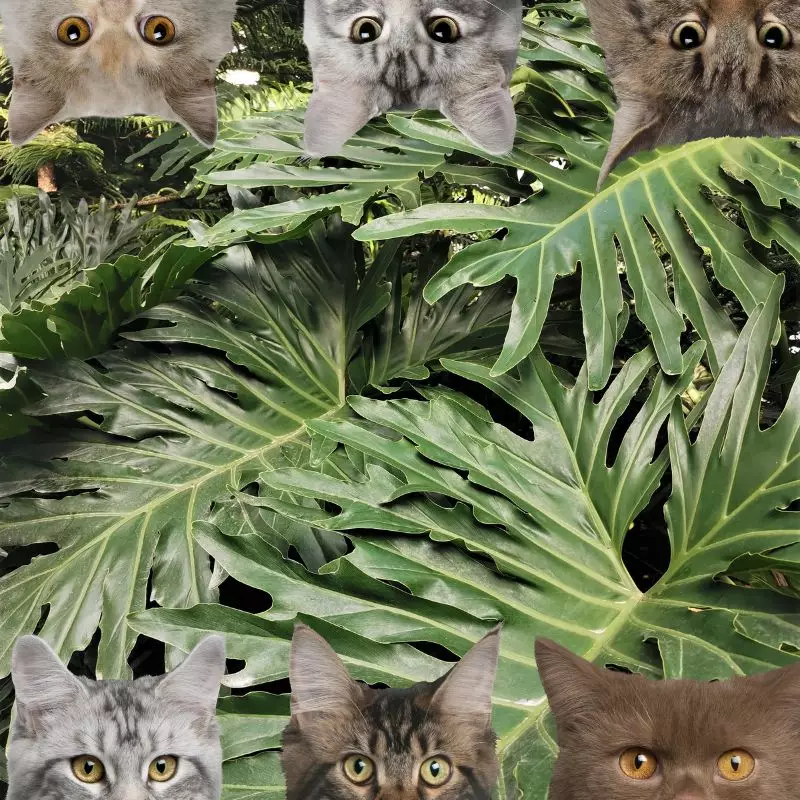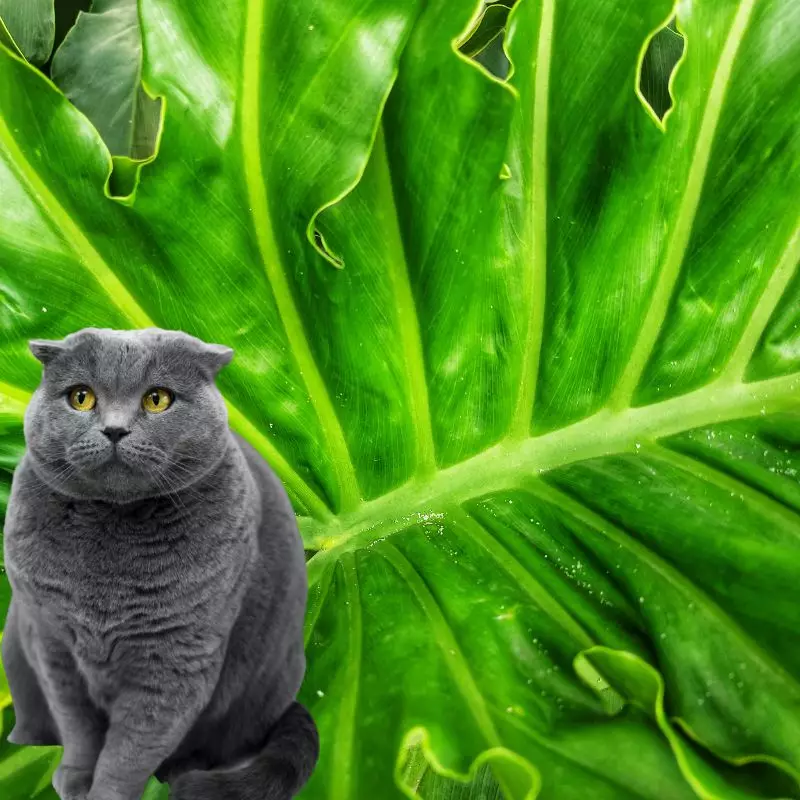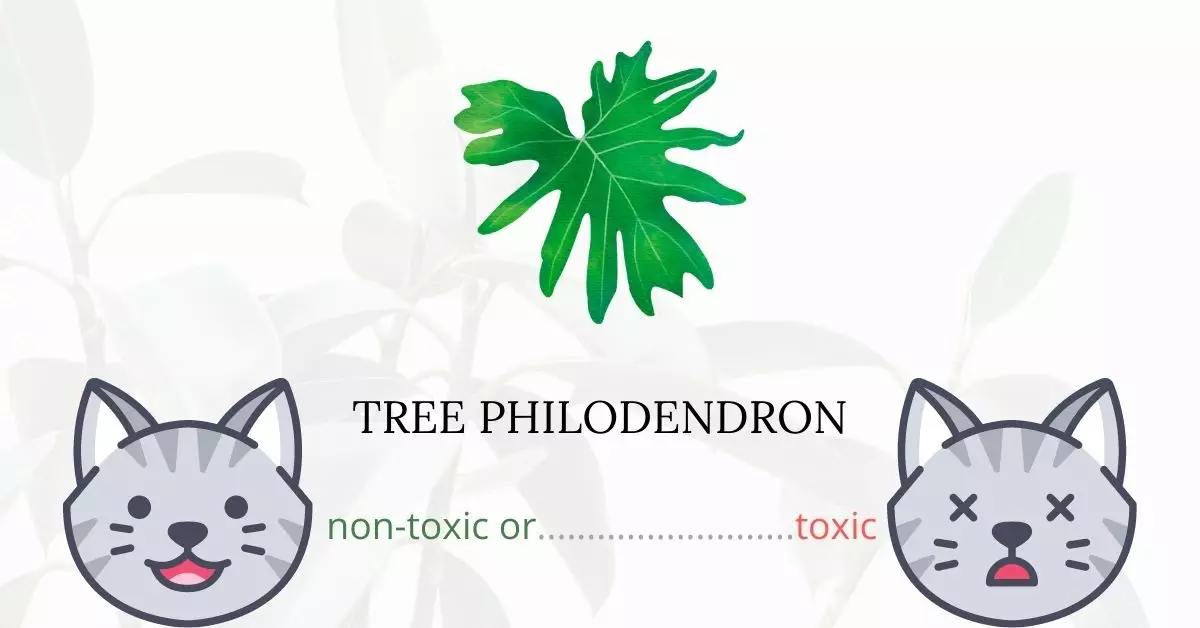Indeed, Tree Philodendron is toxic to cats.
This article, penned with insights and collaborative efforts from a group of seasoned Doctors of Veterinary Medicine (DVMs), aims to furnish readers with precise and current information on the dangers posed by Tree Philodendron and its effects on cats. Our DVM contributors, with their wealth of experience and knowledge, ensure that the information provided is accurate and relevant, helping pet owners understand the risks associated with this plant. In addition to our collaboration with veterinary experts, extensive research has been conducted using high-authority websites such as ASPCA and PetMD to corroborate the information on every plant discussed, including Tree Philodendron.
Tree Philodendron contains insoluble calcium oxalate crystals, produced by specialized cells known as idioblasts, which are hazardous to cats. These needle-sharp crystals, located within the plant’s tissue, form raphides, serving as a defense mechanism against herbivory. When a cat chews on the plant, these crystals reach the sensitive tissues of the mouth and pharynx, causing severe discomfort and a burning sensation.
Clinical Signs of Tree Philodendron Poisoning in Cats

When cats come into contact, inhale, or consume the Tree Philodendron plant, the encounter can induce a range of clinical signs due to the plant’s toxic constituents. Below, each sign is detailed, highlighting the underlying causes resulting from the interaction with the plant.
- Oral Pain and Intense Burning: The needle-shaped calcium oxalate crystals present in the plant can penetrate the sensitive tissues of the mouth and throat when chewed, leading to intense oral pain and a burning sensation. This is primarily due to the physical damage and irritation caused by the crystals.
- Hypersalivation (Drooling): The irritation and intense burning sensation triggered by the crystals stimulate the salivary glands to produce excessive saliva, leading to profuse drooling. This is the body’s natural response to try and eliminate the irritant.
- Soft Tissue Swelling: Interaction with the plant’s crystals induces inflammation in the contacted areas, causing the soft tissues in the mouth and throat to swell. This swelling is a protective reaction from the body, attempting to isolate and minimize the spread of the irritant.
- Vomiting: Ingestion of the plant’s toxic elements can upset the cat’s stomach, leading to nausea and subsequent vomiting. This is another mechanism by which the body tries to expel the harmful substances.
- Difficulty Swallowing: The swelling and irritation in the mouth and throat can hinder the normal swallowing reflex, making it painful and challenging for the cat to swallow food or even saliva.
- Swelling of the Mouth and Throat: The inflammatory response to the plant’s toxins causes pronounced swelling in the mouth and throat areas, potentially compromising the airway and leading to respiratory distress in severe cases.
- Difficulty Breathing (rare): Although rare, severe swelling can obstruct the airway, leading to difficulties in breathing. This is a critical condition and necessitates immediate veterinary attention.
Due to the bitter taste and the acute pain induced by the plant’s toxins, most cats will refrain from continuing to chew on the Tree Philodendron, limiting the extent of exposure. Nonetheless, any contact with or consumption of this plant necessitates prompt veterinary consultation to mitigate the risks and administer appropriate treatment.
First Aid and Treatment of Tree Philodendron Poisoning in Cats

Although veterinary care is rarely required, you should keep an eye on the symptoms and contact your veterinarian if they worsen. Otherwise, tuna water or a light chicken broth might be fed. These drinks will assist to flush the crystals out of your cat’s mouth and relieve the discomfort they have caused. Your cat may need pain medicine, anti-swelling medication, medication to assist bind any remaining plant material in the GI tract, as well as IV fluids and nutritional support until they are able to eat on their own.
Recovery from Tree Philodendron Poisoning in Cats

The tree philodendron’s toxicity ranges from mild to moderate. Because the toxin contains insoluble crystals, the sooner you wash the toxin out of your cat’s mouth, the less harm the crystals can cause. The crystals can also harm the gastrointestinal tract if a piece of the plant is consumed. However, with competent veterinary care, the chances of a full recovery are good.
Prevention of Tree Philodendron Poisoning in Cats
Keeping tree philodendrons out of the house and yard is the only way to avoid poisoning. If you keep it in the same house as your cat, better to keep it out of reach. Most cats will be put off by the bitter taste and severe mouth discomfort. Due to their inquisitive curiosity, cats are more likely to consume non-food objects.
If you love plants but have cats at home, check out these lists:





